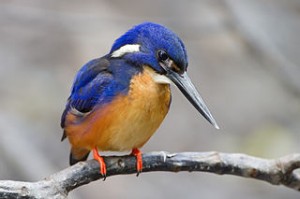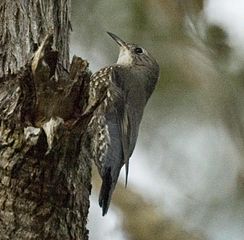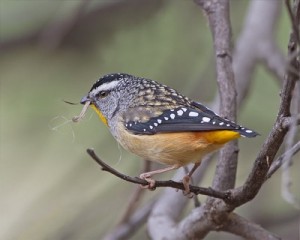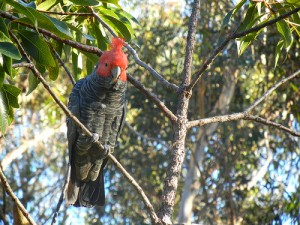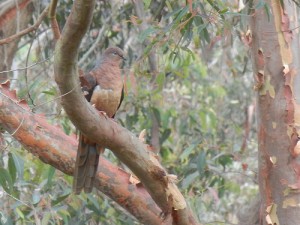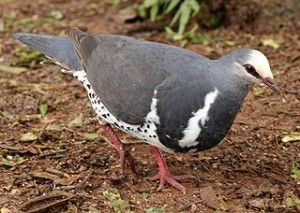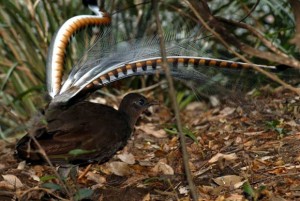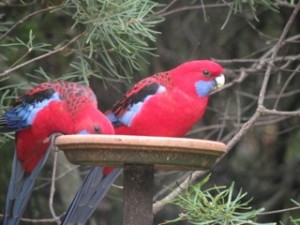For most of my life I thought I was listening to one bird calling when it was actually a pair. Welcome to the Eastern Whip-Bird, one of the more than thirty species regularly seen – or heard! – at Bunjaree Cottages.
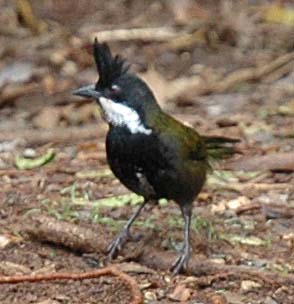
Image: Barrylb under the Creative Commons license. Source http://en.wikipedia.org/wiki/Eastern_Whipbird
Its call can be heard in the recording on this page at Birds in Backyards (a fabulous resource). The first “whip-crack” comes from the male, with his mate chiming in at the end with a “choo-choo” response. The Eastern Whip-Bird’s call also contributes to the various sounds Bunjaree’s resident lyrebird weaves into his imitations.
The Eastern Whip-Bird is a secretive insect-feeder, olive green with a long tail, a grey-white belly, and a black head with white cheek and eye patches. They can sometimes be seen feeding on the ground if you’re patient (and lucky!).


